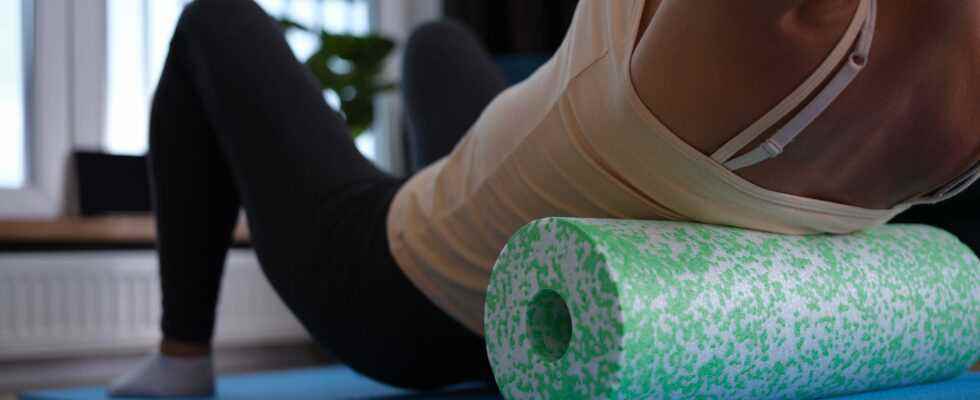If one were to slice the body lengthwise to reveal its natural covering, one would find two distinct layers: the superficial fascia, just beneath the skin, and the deep fascia, which envelops and connects muscles and organs. Some professionals also include the visceral fascia, which lines the body cavity and divides it into the spaces of the various organs. Alongside this are thin layers of connective tissue that line pretty much every part of the body. According to this definition, the fascia forms a network that holds us together (see “A body-wide network”).
Amazingly, nobody looked at the fabric in detail until the early 2000s. Carla Stecco was among the first to do so. She is an orthopedic surgeon and anatomist at the University of Padua in Italy. She began studying fascia 20 years ago. The occasion: Her father, the physiotherapist Luigi Stecco, invented a form of physical therapy which he called fascial manipulation. He claimed it could treat everything from headaches to muscle and joint pain. Today, his approach forms one of many physical therapies based on the idea that fascia can stiffen and be loosened with massage.
A body-wide web
Our understanding of how fascia affects health depends on how one defines the beginning and end of fascia in the body.
Some people think that the term includes not only the different layers of connective tissue under the skin and around the muscles, but also the interstitium. This is the fluid-filled connective tissue that lines every organ, muscle fiber, and blood vessel.
If true, the fascia forms a fluid-filled network that runs throughout the body and could act as both a shock absorber and an immune system of its own, playing a role in inflammatory disease, scarring, and the spread of cancer.
The true nature of the interstitium was only discovered in 2018. In one study, Neil Theise of the Icahn School of Medicine in Mount Sinai, New York, and his colleagues used a new microscopic technique to study the structure of the interstitium in living humans. In the past, the only way to view the tissue was to take it out and crush it on a slide. A look at the living tissue showed that what previously looked like a dense tangle of fibers actually has a spongy structure. It is filled with fluid that flows into the lymphatic system and is therefore part of the body’s immune system.
The team suspects that physical exercise can help keep this fluid system healthy: by increasing the heart’s pumping capacity, mobilizing the digestive tract and moving the body. “Apparently, such spaces are not static,” says Theise. This discovery suggests that the body is connected in ways we are only just beginning to understand.
The problem with this: There was no evidence for or against the thesis that touches and grips do anything with the fascia or even affect the pain. Carla Stecco found that the literature did not explain in detail what fascia actually is. It wasn’t even known if they were connected to nerves, she says.
In the meantime, she and others have shown that fascia is richly equipped with nerve fibers. The information they pass on varies depending on the part of the body. The nerves of the superficial fascia are specialized for pressure, temperature and movement. The deep fascia is involved in proprioception, that is, determining where the body is in space. They can also perceive pain, specialists speak of nociception.
